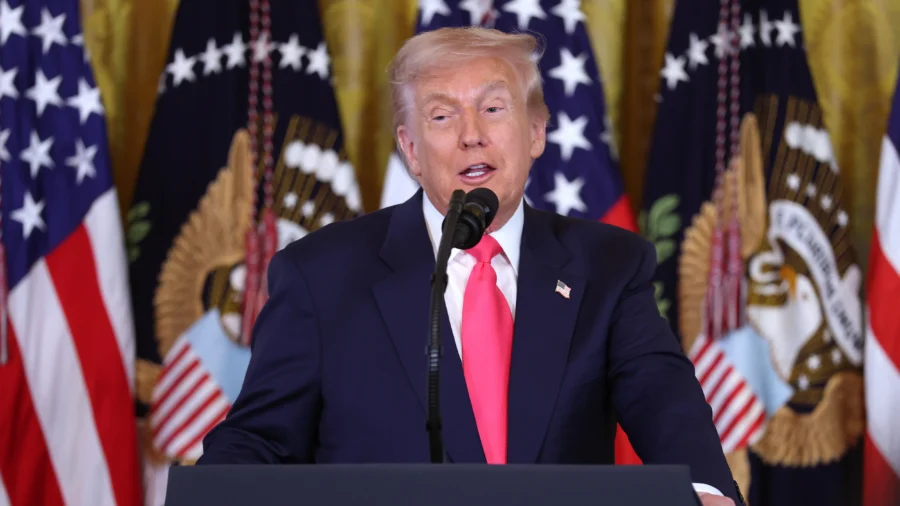Delhi bomber glorifies suicide bombing as martyrdom: How Islamist doctrine, scriptural sanction, and intellectual gaslighting sustain Islamic terrorism
The emergence of a video featuring Red Fort suicide bomber Dr Umar un Nabi, speaking calmly about the philosophy and mechanics of suicide attacks, once again drags the global conversation to a truth that the world’s opinion-makers have spent decades avoiding. Terrorism today, whether in the crowded streets of Delhi or the war-torn alleys of Gaza, whether in Paris, Kabul, or Baghdad, is not a random explosion of violence but a doctrinally driven, scripturally sanctioned, theologically justified, and institutionally manufactured phenomenon within popular strands of Islamic radicalism. Yet, even as evidence piles up, a powerful intellectual ecosystem relentlessly attempts to gaslight the public, distort the discourse, and shield the ideological core of such violence from scrutiny. Instead, questions are raised on media for broadcasting such ‘poisonous rant’ and giving into ‘sensationalism’ to deflect attention from Islamism that turns both educated and the uneducated into a suicide bomber. Dr Umar un Nabi’s video is chilling, not because of its shock value but because of its familiarity. He speaks like a man who has undergone years of ideological polishing. His words are not spontaneous or confused. They are methodical, structured, and anchored in a very popular form of jihadist jurisprudence, sanctioned by Islamic scriptures that ordain the faithful to annihilate non-believers, apostates, and atheists. BIG: First video of Delhi Red Fort Suicide Bomber recorded ahead of the terror attack defending suicide attack as “martyrdom” as per Islam. This seems to be Jaish e Muhammad & Pakistan ISI’s desperate attempt for terror recruitment and motivate for terrorists in Kashmir valley. pic.twitter.com/4iu7fxqkwI— Aditya Raj Kaul (@AdityaRajKaul) November 18, 2025 As he muses on the “mindset” required for suicide attacks, he echoes a long lineage of Islamist ideologues who have reformulated suicide, not as a prohibited act, but as a noble “martyrdom operation.” He directly cites suicide bombing as a “widely recognised practice within Islam,” referencing centuries of theological debates weaponised by extremist clerics to justify contemporary carnage. This is crucial: the bomber does not see his act as a crime. He sees it as obedience. Obedience not to a terror outfit alone but to a doctrinal worldview that has for decades legitimised the killing of innocents as a path to heaven. From Al-Qaeda to ISIS, from Jaish-e-Mohammed (JeM) to Hamas, suicide missions have never been framed as military strategies; they are framed as religious obligations. This is why radicalised men trained in Pakistani seminaries, Syrian camps, or Kashmir’s terror network all sound eerily similar. They draw from the same ideological reservoir. A terror attack rooted in Islamist doctrine, not desperation The Delhi suicide bombing on 10 November was not a desperate outburst by a disillusioned man. It was the output of a deeply entrenched infrastructure. Investigators uncovered that the module behind the attack involved white-collar professionals, including Kashmiri Muslim doctors trained in modern medicine yet indoctrinated into medieval theology. The inter-state JeM network orchestrating the operation had procured 2900 kilograms of explosives, pointing to long-term planning, logistical sophistication, and cross-border coordination. Delhi’s Red Fort area was rocked by a blast on November 10, 2025 (Image Source: Times of India) The scale of the plot is further illustrated by the tragedy that unfolded days later in Srinagar, where seized explosive material accidentally detonated at a police station, killing nine personnel and injuring dozens more. Again, this was not an isolated criminal enterprise. It was part of a continuous conveyor belt of Islamist radicalisation stretching from Pakistani handlers to Indian recruits, from digital indoctrination rooms to offline terror cells. The ideological and operational linkages are too consistent, too repetitive, and too global to dismiss as a coincidence. These attacks all follow the same playbook because they have the same authors. The Hamas blueprint: Terror upgrades its toolkit Just when investigators were piecing together the details of the Delhi attack, the case took a darker turn. The National Investigation Agency (NIA) discovered that the module was not merely planning car bombs. It was studying and attempting to replicate Hamas’s drone tactics, most notably employed during the October 7 terror attack, where explosive-laden UAVs were used to overwhelm Israeli defence systems. Israeli defence system Iron Dome intercepting drone attack by Hamas (Image Source: AFP) The arrest of Jasir Bilal Wani, alias Danish, revealed how terror outfits in India were now blending jihadist motivation with technological adaptation. Danish was allegedly modifying commercially available drones to carry heavier explosive payloads, equipping them with larger batteries, and



The emergence of a video featuring Red Fort suicide bomber Dr Umar un Nabi, speaking calmly about the philosophy and mechanics of suicide attacks, once again drags the global conversation to a truth that the world’s opinion-makers have spent decades avoiding.
Terrorism today, whether in the crowded streets of Delhi or the war-torn alleys of Gaza, whether in Paris, Kabul, or Baghdad, is not a random explosion of violence but a doctrinally driven, scripturally sanctioned, theologically justified, and institutionally manufactured phenomenon within popular strands of Islamic radicalism.
Yet, even as evidence piles up, a powerful intellectual ecosystem relentlessly attempts to gaslight the public, distort the discourse, and shield the ideological core of such violence from scrutiny. Instead, questions are raised on media for broadcasting such ‘poisonous rant’ and giving into ‘sensationalism’ to deflect attention from Islamism that turns both educated and the uneducated into a suicide bomber.
Dr Umar un Nabi’s video is chilling, not because of its shock value but because of its familiarity. He speaks like a man who has undergone years of ideological polishing. His words are not spontaneous or confused. They are methodical, structured, and anchored in a very popular form of jihadist jurisprudence, sanctioned by Islamic scriptures that ordain the faithful to annihilate non-believers, apostates, and atheists.
BIG: First video of Delhi Red Fort Suicide Bomber recorded ahead of the terror attack defending suicide attack as “martyrdom” as per Islam. This seems to be Jaish e Muhammad & Pakistan ISI’s desperate attempt for terror recruitment and motivate for terrorists in Kashmir valley. pic.twitter.com/4iu7fxqkwI
— Aditya Raj Kaul (@AdityaRajKaul) November 18, 2025
As he muses on the “mindset” required for suicide attacks, he echoes a long lineage of Islamist ideologues who have reformulated suicide, not as a prohibited act, but as a noble “martyrdom operation.” He directly cites suicide bombing as a “widely recognised practice within Islam,” referencing centuries of theological debates weaponised by extremist clerics to justify contemporary carnage.
This is crucial: the bomber does not see his act as a crime. He sees it as obedience. Obedience not to a terror outfit alone but to a doctrinal worldview that has for decades legitimised the killing of innocents as a path to heaven.
From Al-Qaeda to ISIS, from Jaish-e-Mohammed (JeM) to Hamas, suicide missions have never been framed as military strategies; they are framed as religious obligations. This is why radicalised men trained in Pakistani seminaries, Syrian camps, or Kashmir’s terror network all sound eerily similar. They draw from the same ideological reservoir.
A terror attack rooted in Islamist doctrine, not desperation
The Delhi suicide bombing on 10 November was not a desperate outburst by a disillusioned man. It was the output of a deeply entrenched infrastructure. Investigators uncovered that the module behind the attack involved white-collar professionals, including Kashmiri Muslim doctors trained in modern medicine yet indoctrinated into medieval theology. The inter-state JeM network orchestrating the operation had procured 2900 kilograms of explosives, pointing to long-term planning, logistical sophistication, and cross-border coordination.

The scale of the plot is further illustrated by the tragedy that unfolded days later in Srinagar, where seized explosive material accidentally detonated at a police station, killing nine personnel and injuring dozens more. Again, this was not an isolated criminal enterprise. It was part of a continuous conveyor belt of Islamist radicalisation stretching from Pakistani handlers to Indian recruits, from digital indoctrination rooms to offline terror cells.
The ideological and operational linkages are too consistent, too repetitive, and too global to dismiss as a coincidence. These attacks all follow the same playbook because they have the same authors.
The Hamas blueprint: Terror upgrades its toolkit
Just when investigators were piecing together the details of the Delhi attack, the case took a darker turn. The National Investigation Agency (NIA) discovered that the module was not merely planning car bombs. It was studying and attempting to replicate Hamas’s drone tactics, most notably employed during the October 7 terror attack, where explosive-laden UAVs were used to overwhelm Israeli defence systems.

The arrest of Jasir Bilal Wani, alias Danish, revealed how terror outfits in India were now blending jihadist motivation with technological adaptation. Danish was allegedly modifying commercially available drones to carry heavier explosive payloads, equipping them with larger batteries, and installing live-feed cameras to maximise precision. He also experimented with crude rockets, an unmistakable indication that the module was attempting to graduate from conventional explosives to aerial warfare.
This is a chilling reminder that modern terrorism is evolving from a low-tech insurgency to a hybrid form of doctrinal warfare combined with engineering innovation. Islamist groups have always been adept at adapting global technology, whether it was Al-Qaeda’s use of satellite phones in the 1990s, ISIS’s use of social media in the 2010s, or Hamas’s use of drones in 2023. Now Indian modules appear to be drawing from the same playbook.
The plan, according to investigators, was devastating in its simplicity: fly an explosive-laden drone over a densely populated part of Delhi and detonate it from above, ensuring maximum casualties. This would have marked one of India’s first mass-casualty drone attacks—and a direct importation of global jihadist tactics into Indian soil.
The intellectual gaslighting: Protect the ideology, attack the messenger
Whenever Islamist terror reveals its doctrinal foundation, a predictable pattern emerges in India’s secular–liberal discourse: denial, deflection, and moral posturing. Instead of confronting the ideology shaping such attacks, a segment of “intellectual Muslims” and their allies immediately shift their outrage toward the media, the police, or the political climate, anywhere except the ideology itself.
This was evident in the reaction of RJ Sayema, a well-known public figure, who launched a tirade not against the terrorist but against the news channels that aired the bomber’s video. She tweeted: “Why are mainstream news media sharing that chilling video of a terrorist! It’s so disturbing and triggering… This age of TRPs based on sensationalism is so disturbing! Absolutely condemnable.”
Why are mainstream news media sharing that chilling video of a terrorist! It’s so disturbing and triggering and I can’t imagine what the families of the victims would be going through, looking at it! This age of TRPs based on sensationalism is so disturbing! Absolutely…
— Sayema (@_sayema) November 18, 2025
The subtext was clear: If the public were to hear the terrorist openly citing Islamic justification for suicide bombing, the ideological foundation of jihadist violence would become impossible to deny. So the outrage was redirected, from the bomber to the broadcasters. The goal wasn’t to protect victims’ families; it was to shield the ideology from exposure.
Similarly, Vijaita Singh of The Hindu declared: “Stop posting that suicide bomber’s video, all you are doing is amplifying his poisonous rant. #redfort”
Again, the concern wasn’t that the doctrine was poisonous, it was that the public might hear it, analyse it, and question its origins.
This selective outrage becomes even more absurd when juxtaposed with how the same individuals behave when the perpetrator is Hindu. In those cases, labels like “Hindu terrorism,” “Hindutva extremism,” and “saffron terror” are thrown around with breathtaking speed, often before investigations even conclude. Even when a crime has no religious motive, these commentators rush to generalise it as a reflection of Hindu majoritarian culture.
Yet when terrorists clearly cite Islamic scripture as inspiration, the same people suddenly preach restraint, accuse the media of sensationalism, and insist that ideology should not be blamed. Their vocabulary changes from “terrorist ideology” to “lone wolf.” Their tone changes from accusatory to apologetic. Their standards change entirely.
This is not an inconsistency. This is deliberate intellectual gaslighting.
The aim is to sanitise Islamist doctrine, protect communal vote-banks, and preserve the illusion that terrorism has no religious motivation, even when terrorists themselves confess otherwise. And by attacking media outlets, these intellectuals hope to create a climate where exposing jihadist indoctrination becomes socially risky and politically incorrect.
The core truth: Islamic theology is the cornerstone of modern-day terrorism
The bomber’s video, the drone-weaponisation plans, and the elite gaslighting that followed all point to a single inescapable reality: the world is fighting an ideology, not an isolated set of actors. The weapons may evolve, from car bombs to drones, but the fuel remains the same: Islamic theology, a doctrine that sanctions othering and dehumanisation of non-Muslims, glorifies death, rewards murder, and frames violence as a sacred duty.
Democracies cannot defeat this threat by policing weapons alone. They must confront the doctrine that mass-produces believers willing to use them. And they cannot confront that doctrine while being manipulated into silence by intellectual mercenaries who shield ideology under the guise of sensitivity and progressive politics.
The Red Fort attack was not merely a terror strike. It was a doctrine in motion. A technology in transition. And a narrative shield is in operation. The world will only begin to fight back effectively when it finally acknowledges all three.






































































